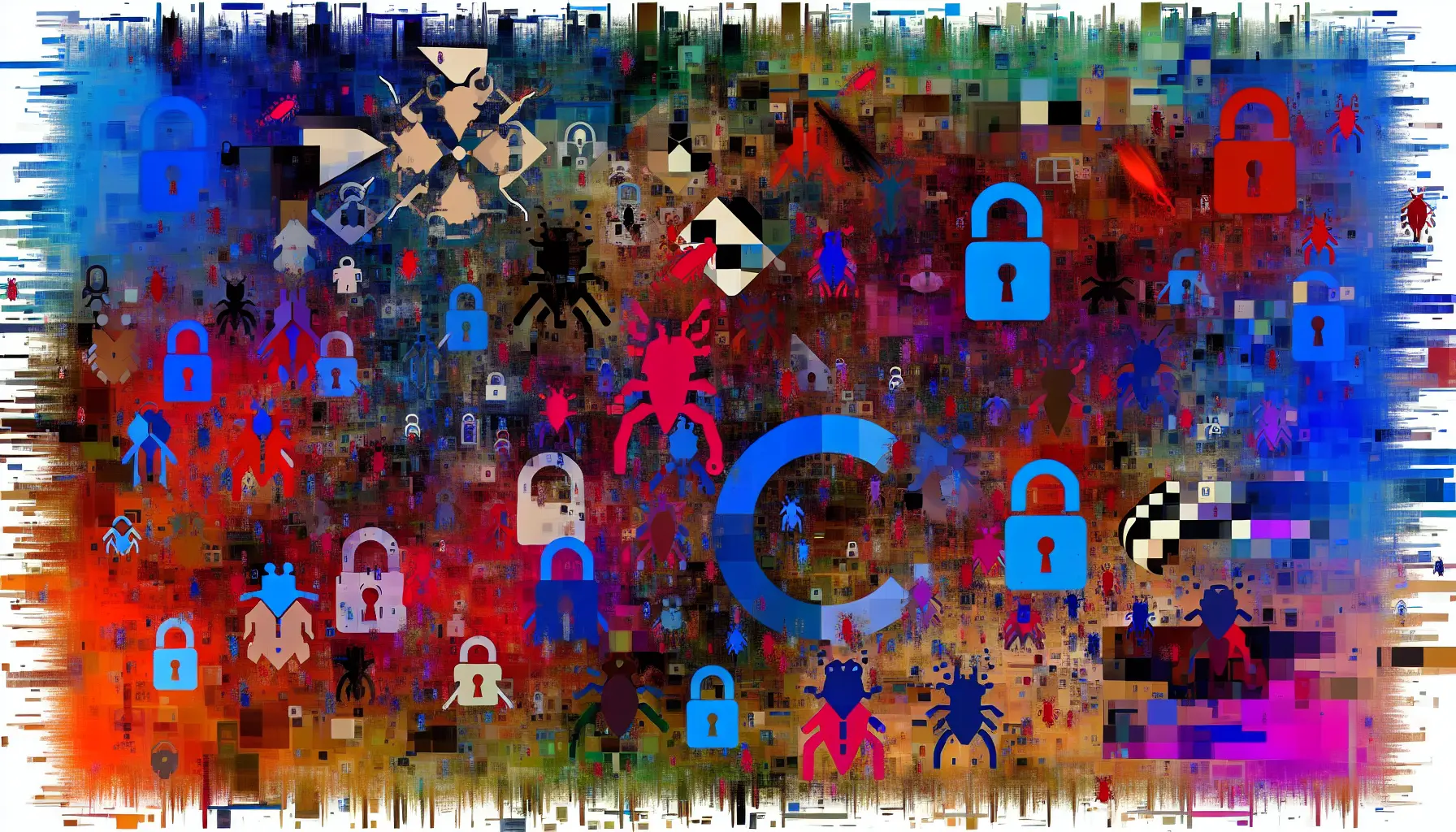Here’s a reworded version of the paragraph:
What You Need to Know About Bug Bounties
Bug bounty programs play a vital role in bolstering an organization’s overall security. To fully grasp their importance, it’s crucial to understand the core principles behind these initiatives and how they fit into the broader cybersecurity picture.
I made some minor changes to make the language more concise and engaging, while keeping the original meaning intact. Let me know if you’d like any further adjustments!
What is a Bug Bounty Program?
A bug bounty program is a cybersecurity initiative that incentivizes and rewards independent security researchers for responsibly disclosing security vulnerabilities present in an organization’s digital assets, including web applications, software, or platforms.
The History and Evolution of Bug Bounties
Bug bounty programs have evolved significantly since their inception, with companies recognizing the value of engaging external cybersecurity talent to identify and address vulnerabilities proactively.
The Role of Bug Bounties in Cybersecurity
Bug bounties play a crucial role in augmenting traditional security practices by leveraging the diverse expertise of external researchers. They act as a force multiplier, enabling organizations to detect and resolve security flaws before they can be exploited by malicious actors.
By understanding the essence and evolution of bug bounties, organizations and security researchers alike can leverage this collaborative model to fortify digital defenses and protect against cyber threats.

How Bug Bounty Programs Work
Bug bounty programs are structured to facilitate the responsible disclosure of security vulnerabilities and ensure effective collaboration between organizations and independent security researchers:
Identification and Reporting of Vulnerabilities
Bug bounty hunters, also known as researchers, identify potential security vulnerabilities within the scope of the program. They then report these findings to the organization running the bug bounty program by following a responsible disclosure process.
The Bug Bounty Platforms Ecosystem
Several bug bounty platforms, such as HackerOne, Bugcrowd, and Synack, provide a structured environment for organizations to host bug bounty programs and for security researchers to participate and submit their findings.
Rewards and Recognition in Bug Bounty Programs
Bug bounty programs offer monetary rewards, acknowledgments, and sometimes even public recognition to researchers who identify and report valid security vulnerabilities. These incentives contribute to the motivation and engagement of security researchers.
Understanding how bug bounty programs operate is crucial for organizations and security researchers looking to collaborate effectively and ensure the successful identification and resolution of security vulnerabilities.

Advantages of Bug Bounties
Bug bounty programs offer a range of advantages for organizations seeking to bolster their security defenses and for the security researchers involved in identifying and reporting vulnerabilities:
Enhancing Security With Crowdsourced Testing
Bug bounties harness the collective expertise of a diverse group of security researchers, allowing organizations to benefit from a broader range of skills and perspectives in identifying potential security weaknesses.
Cost-Effectiveness Compared to Traditional Security Audits
Bug bounty programs offer a cost-effective approach to security testing, as they incentivize researchers to identify vulnerabilities without the overhead costs typically associated with traditional security audits.
Building a Community of Security Researchers
Bug bounty programs foster a community of skilled security researchers, creating an environment for knowledge sharing, skill development, and the cultivation of expertise in cybersecurity.
Understanding the advantages of bug bounties illuminates their value in enhancing security practices and cultivating a collaborative environment for security researchers.

Challenges Associated With Bug Bounties
While bug bounty programs offer numerous advantages, they also present unique challenges that organizations and security researchers should be mindful of:
Ensuring Efficient and Fair Vulnerability Assessment
Assessing and prioritizing reported vulnerabilities in an efficient and fair manner is a critical challenge. Organizations must ensure thorough and impartial assessment to address genuine security threats effectively.
Managing the Scope and Scale of Programs
Establishing clear and manageable scope parameters for bug bounty programs can be challenging. Ensuring that the defined scope aligns with the organization’s security needs while remaining manageable for security researchers is a delicate balance.
Legal and Ethical Considerations
Navigating legal frameworks, intellectual property rights, and ethical considerations in bug bounty programs presents a distinctive challenge. Organizations and researchers must ensure compliance with local and international laws and adhere to ethical principles throughout the bug hunting process.
Understanding and addressing these challenges is essential for the successful implementation and participation in bug bounty programs.

Success Stories in Bug Bounties
Success stories in bug bounties highlight valuable findings, collaborative efforts, and the positive impact of bug bounty programs on security and the security research community:
Notable Bug Bounty Finds and Fixes
Sharing success stories about impactful vulnerability findings and the subsequent fixes can illustrate the significance of bug bounty programs in identifying critical security weaknesses and fortifying digital defenses.
Companies That Thrive With Bug Bounty Programs
Highlighting organizations that have effectively implemented bug bounty programs, improved their security posture, and established productive and sustainable relationships with the security research community can inspire others to follow suit.
Individual Successes: Highlighting Top Bug Hunters
Recognizing the contributions and successes of top bug hunters can motivate and encourage other researchers to engage in bug hunting and demonstrate the potential for meaningful and rewarding achievements in this field.
Sharing these success stories not only showcases the positive outcomes of bug bounty programs but also reinforces the collaborative and mutually beneficial nature of the bug hunting community.

Getting Involved in Bug Bounties
Bug bounty programs provide valuable opportunities for both organizations and security researchers to engage in collaborative security testing efforts:
For Companies: Implementing a Bug Bounty Program
Organizations can establish bug bounty programs to cultivate a proactive security culture, leverage the skills of external researchers, and identify and remediate vulnerabilities in their digital assets effectively.
For Researchers: Starting a Career in Bug Hunting
Security researchers can embark on bug hunting careers by participating in bug bounty programs, honing their skills, and contributing to the security posture of organizations worldwide.
Understanding the pathways for participation in bug bounties can encourage active engagement, facilitate stronger security collaborations, and foster professional growth within the cybersecurity community.

Future of Bug Bounties in Cybersecurity
The future of bug bounties in cybersecurity is poised for significant developments, driven by an evolving threat landscape and technological advancements:
Emerging Trends in Bug Bounty Programs
Continued evolution of bug bounty programs to adapt to new attack vectors and technologies, incorporating diverse security testing methodologies and expanding program scopes to cover a wider range of assets.
Integration of Automation and AI in Bug Hunting
The integration of automated security testing tools and artificial intelligence to complement and enhance the bug hunting capabilities of human researchers, enabling more comprehensive and efficient vulnerability assessments.
Collaboration with Government Agencies and Regulations
Closer collaboration between bug bounty programs and government entities to address critical infrastructure security, compliance with cybersecurity regulations, and the establishment of standardized bug reporting procedures.
Anticipating and adapting to these future trends will be crucial for organizations and bug bounty platforms in sustaining the effectiveness and relevance of bug bounty programs in the ever-evolving cybersecurity landscape.

Frequently Asked Questions
Here are some commonly asked questions about bug bounties, providing valuable insights for both organizations and individuals interested in participating:
What Types of Vulnerabilities Are Typically Targeted by Bug Bounties?
Bug bounties commonly target a wide range of vulnerabilities, including but not limited to cross-site scripting (XSS), SQL injection, authentication bypass, server-side request forgery (SSRF), and remote code execution (RCE).
How Much Can a Bug Bounty Hunter Earn?
Earnings for bug hunters can vary widely based on the severity, scope, and impact of the identified vulnerabilities, with rewards ranging from a few hundred to thousands or even tens of thousands of dollars, depending on the organization and the nature of the vulnerability.
What Are the Risks Involved in Participating in Bug Bounties?
Risks may include legal and ethical considerations, potential conflict with regional laws, and issues such as having vulnerabilities patched without receiving a reward if they are found without participating in a formal bug bounty program.
How Do Companies Ensure that Bug Hunting Activities Are Ethical and Lawful?
Companies ensure ethical and lawful bug hunting activities by creating clear guidelines and rules of engagement, abiding by established industry standards, and engaging with researchers in a respectful and transparent manner.
Addressing these frequently asked questions provides valuable information about bug bounties and offers insights for those interested in participating in such programs.
